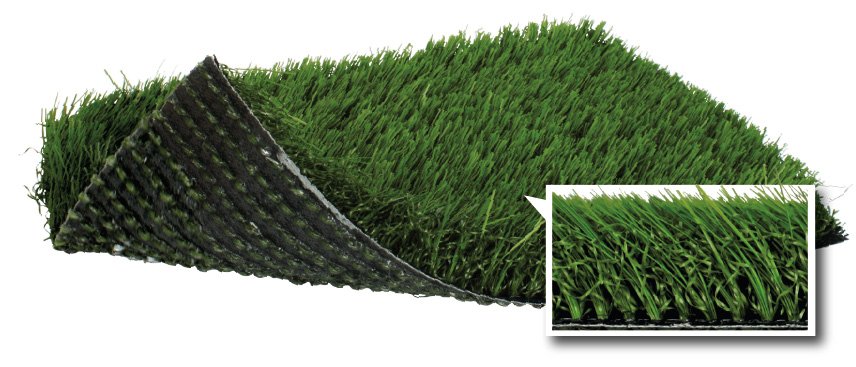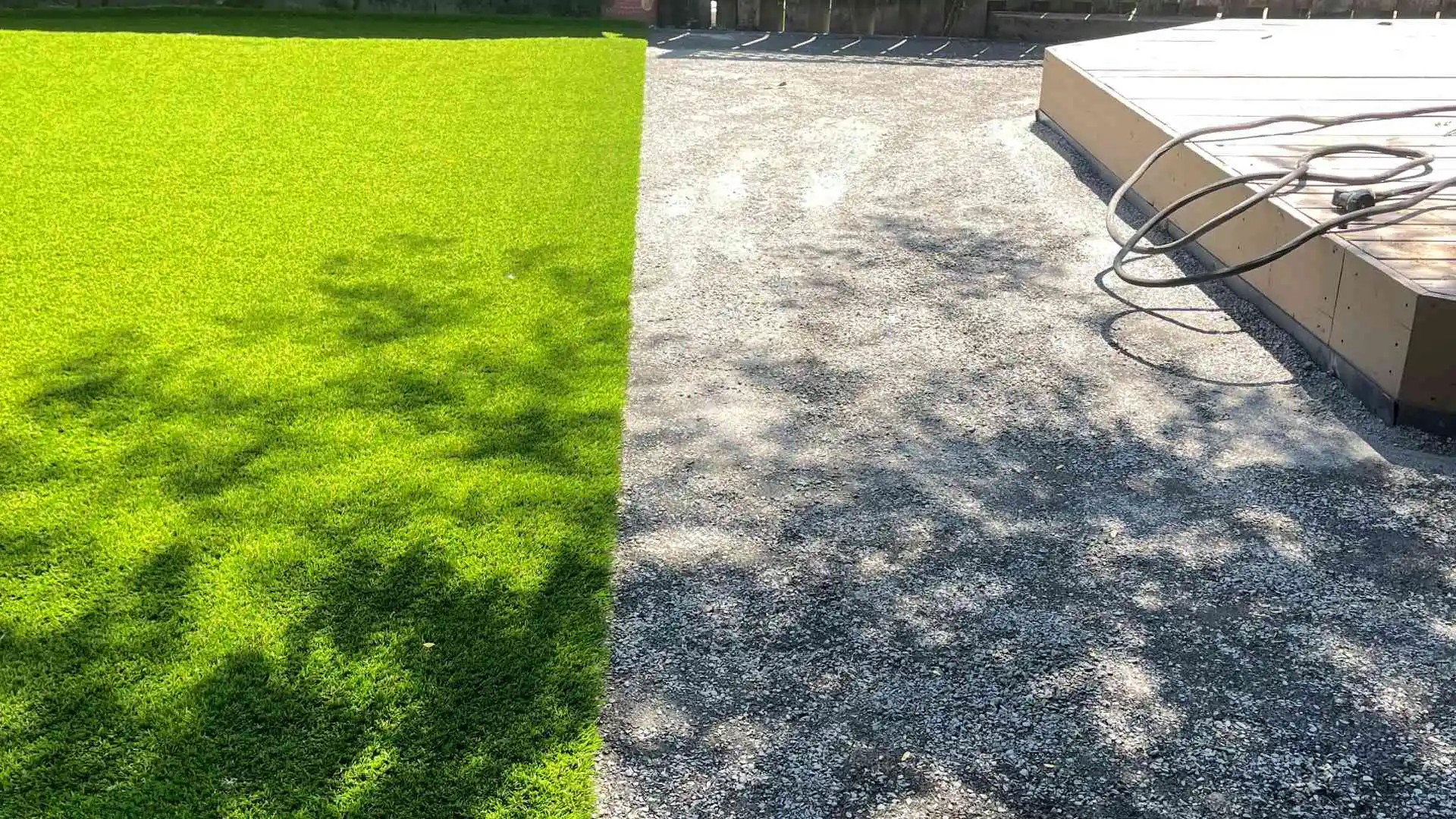Artificial Grass Canoga Park Choices for Durable Greenery
Artificial Grass Canoga Park Choices for Durable Greenery
Blog Article
Leading Reasons to Consider Artificial Yard for a Lavish and Low-Maintenance Yard
As home owners significantly look for sustainable remedies for outside areas, artificial yard presents an appealing alternative to traditional lawns. Its capability to keep a vivid look year-round without the burdens of mowing, chemical, or watering therapies makes it a useful selection for those intending to minimize upkeep efforts. Moreover, the environmental benefits, including substantial water conservation and lowered reliance on chemicals, align with contemporary eco-friendly values. Nonetheless, the advantages expand beyond simple aesthetic appeals and sustainability; exploring the complex implications of synthetic lawn exposes an extensive strategy to lawn administration that values much deeper consideration.
Year-Round Plant
Among the most significant benefits of synthetic grass is its capacity to offer year-round plant, no matter climate conditions. House owners frequently deal with obstacles in preserving a vibrant lawn due to seasonal adjustments, droughts, or hefty rainfall. Man-made lawn removes these worries, making certain a constantly lush appearance throughout the year.
This artificial alternative is engineered to endure diverse climate situations, from sweltering summer warm to freezing winter months temperature levels. Unlike natural grass, which may brownish or become uneven during extreme conditions, man-made turf maintains its lively shade and texture, boosting the visual allure of any landscape.
Furthermore, artificial lawn is resistant to parasites and illness that generally affect natural lawns. This strength adds to its long-lasting elegance, as there is no requirement for chemical treatments or plant foods that can be damaging to the setting. Additionally, homeowners can enjoy the visual advantages of a properly maintained yard without the intermittent challenges positioned by all-natural turf treatment (backyard artificial grass).
Lowered Upkeep Efforts
Artificial lawn considerably minimizes upkeep initiatives, enabling house owners to take pleasure in an excellent yard without the taxing tasks connected with all-natural turf care. One of one of the most notable benefits of artificial lawn is the removal of regular mowing. Without requirement for a lawnmower, property owners conserve both time and the price of maintenance connected with this tools.

Cleaning up man-made turf is simple; a basic rinse with a hose pipe or the occasional cleaning to remove debris is generally sufficient - backyard artificial grass. This convenience of care enables home owners to spend even more time enjoying their outdoor rooms as opposed to struggling over them. In summary, the minimized upkeep initiatives related to man-made lawn make it an enticing selection for those looking for a gorgeous, easy yard
Water Conservation Conveniences
The considerable reduction in maintenance efforts related to artificial lawn encompasses water conservation, making it an environmentally friendly choice for homeowners. Traditional yards call for substantial amounts of water to remain lively and lush, frequently bring about excessive water usage, especially in arid regions. On the other hand, artificial yard removes the need for normal watering, dramatically minimizing the total water consumption in your yard.
By selecting artificial turf, property owners can preserve hundreds of gallons of water every year. This shift not only advantages individual homes however additionally contributes to wider environmental initiatives intended at reducing water waste. In locations experiencing water scarcity, the adoption of synthetic turf can play a significant role in alleviating the impacts of dry spell and guaranteeing that useful water resources are used extra efficiently.
Moreover, the setup of man-made turf can help lower metropolitan water demand, profiting the area overall. With growing awareness of environmental issues, picking artificial yard functions as a positive step in the direction of lasting landscape design, helping to maintain natural water sources while keeping a cosmetically pleasing outside area (turf installation). In recap, artificial yard offers an engaging remedy for water conservation, straightening ecological obligation with modern landscaping demands

Parasite and Allergic Reaction Decrease
A significant benefit of setting up synthetic lawn is its ability to reduce pests and allergens in exterior areas. Traditional turf yards frequently serve as reproducing premises for pests such as insects, ticks, and ants, which can produce discomfort and health threats for pets and family members. In contrast, man-made turf gets rid of the natural you can find out more product that brings in these insects, thus considerably lowering their populaces in your lawn.
Furthermore, all-natural lawn can harbor mold, pollen, and other irritants, which can trigger allergies and breathing issues for delicate people. Artificial lawn offers a cleaner setting, decreasing the potential for allergenic responses. Unlike natural yard, synthetic grass does not produce pollen, making it an exceptional alternative for allergic reaction victims seeking to enjoy their exterior areas without the danger of flare-ups.
Furthermore, the absence of soil in synthetic grass implies there is less dirt and dirt, more reducing air-borne allergens. This low-maintenance choice not just improves the visual allure of your yard however also advertises a healthier outdoor setting, enabling family members to appreciate their lawns without the consistent fear of insects and irritants. Thus, synthetic turf is a strategic option for those focusing on comfort and health and wellness in their outside living spaces.
Long-Term Cost Cost Savings
Investing in artificial turf can lead to substantial lasting expense financial savings for property owners. Fabricated grass removes the demand for normal grass upkeep costs, such as mowing, feeding, and watering.
Additionally, the durability of synthetic grass additionally boosts its cost-effectiveness. Most premium synthetic lawn products can last 15 to 25 years with minimal maintenance, decreasing the requirement for replacement or extensive repair work. On the other hand, natural yard may call for regular reseeding and regular treatment, which can rapidly build up in costs.
Utility savings are one more important aspect. Homeowners can expect to see lower water costs, as synthetic lawn does not call for you can check here watering. In addition, the decrease in yard treatment solutions can liberate valuable time and resources, enabling property owners to assign their budgets in other places.
Final Thought
In summary, man-made lawn offers various advantages for home owners seeking a low-maintenance and dynamic landscape. Its capacity to offer year-round plant, coupled with decreased upkeep efforts and considerable water conservation, makes it an attractive choice. Furthermore, the decrease of allergens and pests contributes to a much healthier outside setting. Inevitably, the lasting cost savings connected with synthetic grass strengthen its condition as a sensible and lasting service for enhancing exterior rooms.
Man-made yard substantially decreases maintenance initiatives, allowing home owners to delight in check these guys out a pristine grass without the time-consuming tasks connected with natural turf treatment.The substantial reduction in maintenance efforts linked with synthetic grass expands to water preservation, making it an environmentally friendly choice for home owners. In contrast, artificial grass eliminates the requirement for routine watering, considerably decreasing the overall water consumption in your lawn.
In areas experiencing water shortage, the adoption of man-made grass can play a substantial duty in mitigating the effects of drought and guaranteeing that beneficial water resources are made use of extra successfully.
With growing understanding of environmental issues, picking artificial turf offers as a positive action in the direction of sustainable landscape design, aiding to maintain natural water resources while keeping an aesthetically pleasing outside space.
Report this page